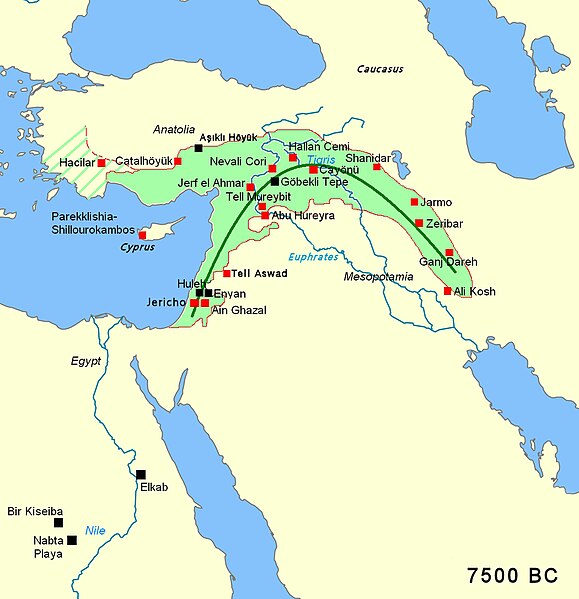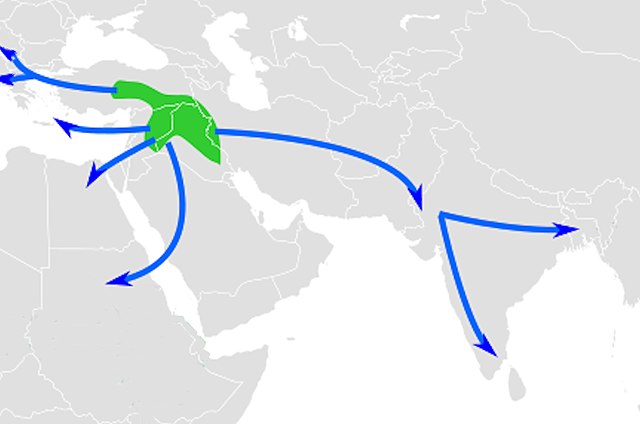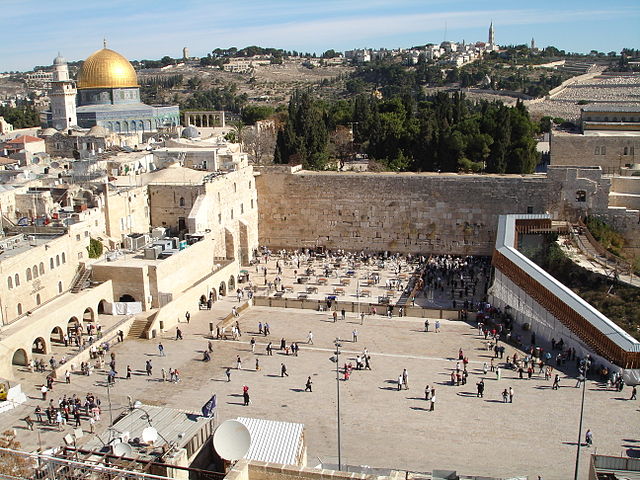The Fertile Crescent is a crescent-shaped region in the Middle East, spanning modern-day Iraq, Israel, Jordan, Lebanon, Palestine, and Syria, together with northern Kuwait, south-eastern Turkey, and western Iran. Some authors also include Cyprus and northern Egypt.
Area of the fertile crescent, c. 7500 BCE, with main sites of the Pre-Pottery Neolithic period. The area of Mesopotamia proper was not yet settled by humans. Includes Göbekli Tepe, a site in modern-day Turkey that is dated circa 9000 BCE.
Diffusion of agriculture from the Fertile Crescent after 9000 BCE
The Middle East is a geopolitical region encompassing the Arabian Peninsula, the Levant, Turkey, Egypt, Iran, and Iraq. The term came into widespread usage as a replacement of the term Near East beginning in the early 20th century. The term "Middle East" has led to some confusion over its changing definitions, and being seen as too Eurocentric. The region includes the vast majority of the territories included in the closely associated definition of West Asia, but without the South Caucasus, and additionally includes all of Egypt and all of Turkey.
Some henges at Göbekli Tepe were erected as far back as 9600 BC, predating those of Stonehenge, England, by over seven millennia. The site of the oldest known religious structure created by humans.
Western Wall and Dome of the Rock in Jerusalem
Church of the Holy Sepulchre in Jerusalem
The Kaaba, located in Mecca, Saudi Arabia






